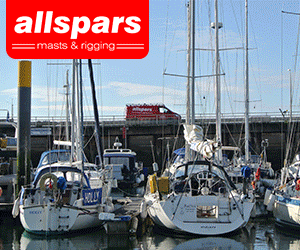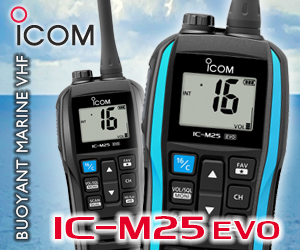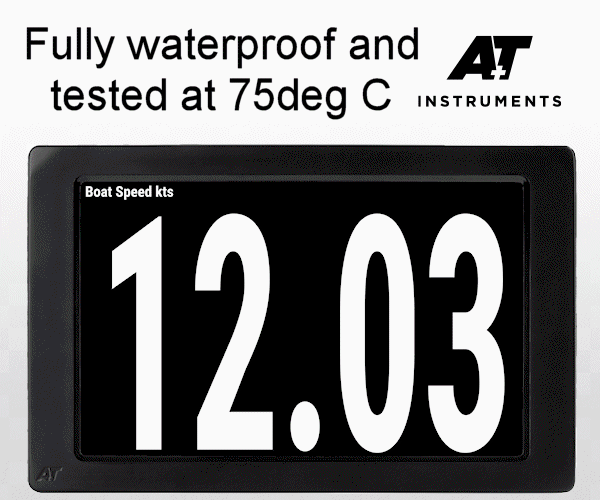









-(1)-202408140552.gif)


Boats for sale
| Rossiter Pintail Mortagne sur Gironde, near Bordeaux |
 |
| Laser 140101 Tynemouth |
 |
| Laser 28 - Excellent example of this great design Hamble le rice |
 |
List classes of boat for sale |
glass/ carbon to epoxy/ resin ratios? |
Post Reply 
|
Page 12> |
| Author | |
Guests 
Guest Group 
|
 Post Options Post Options
 Quote Quote  Reply Reply
 Topic: glass/ carbon to epoxy/ resin ratios? Topic: glass/ carbon to epoxy/ resin ratios?Posted: 22 Feb 10 at 9:54am |
|
There's a good section in the second Bethwaite book about this. As I understand it, epoxy is actually more elastic than polyester resin (ie it stretches more before breaking), which is why it is a good resin. The resin is really only there to bond the fibres together, so you want as little resin as you can get away with. |
|
 |
|
alstorer 
Really should get out more 

Joined: 02 Aug 07 Location: Cambridge Online Status: Offline Posts: 2899 |
 Post Options Post Options
 Quote Quote  Reply Reply
 Posted: 22 Feb 10 at 7:04am Posted: 22 Feb 10 at 7:04am |
|
PVC has low tensile stiffness. Epoxy can be stiff but very brittle; less brittle epoxy is not so stiff
As I understand it (sorts of), part of the way that a fibre/resin composite gains stiffness is that the resins bind the fibres together. When the laminate is then loaded in flexure, the fibres are constrained with respect to one another. The Fibres on the outside of the bend become loaded in tension. If there was no resin, they would simply slide against the fibres to the inside of the bend. Because they can't, and because glass and carbon have good tensile modulus, the bending is resisted. |
|
|
-_
Al |
|
 |
|
ham4sand 
Far too distracted from work 

Joined: 27 Jul 09 Location: United Kingdom Online Status: Offline Posts: 452 |
 Post Options Post Options
 Quote Quote  Reply Reply
 Posted: 21 Feb 10 at 8:55pm Posted: 21 Feb 10 at 8:55pm |
|
? i swear its the other way round? whats the dfinition of
"toughness". arent the fibres all floppy when dry, basically material you could make (very itchy) clothes from? when the resin dries it goes hard, providing "stiffness" whilst the fibres are load-bearing? am i barking up the wrong tree? 
|
|
|
John Hamilton
cherub 2645 - cheese before bedtime cherub 3209 - anatidaephobia laser 176847 - kiss this |
|
 |
|
foaminatthedeck 
Far too distracted from work 
Joined: 18 May 06 Online Status: Offline Posts: 318 |
 Post Options Post Options
 Quote Quote  Reply Reply
 Posted: 21 Feb 10 at 8:10pm Posted: 21 Feb 10 at 8:10pm |
|
Edited by foaminatthedeck |
|
|
Lark 2170
|
|
 |
|
JimC 
Really should get out more 

Joined: 17 May 04 Location: United Kingdom Online Status: Offline Posts: 6662 |
 Post Options Post Options
 Quote Quote  Reply Reply
 Posted: 21 Feb 10 at 8:06pm Posted: 21 Feb 10 at 8:06pm |
|
error
Edited by JimC |
|
 |
|
tomoore1 
Groupie 
Joined: 03 Jun 08 Location: Wales Online Status: Offline Posts: 99 |
 Post Options Post Options
 Quote Quote  Reply Reply
 Posted: 21 Feb 10 at 7:50pm Posted: 21 Feb 10 at 7:50pm |
|
Whats this? ok so although the ratio will affect the stiffness and failure type. So how about using say PVC strands with epoxy. The PVC would allow flex while the epoxy is nice and stiff. What restricts which material 'takes the strain' and which deforms? |
|
|
Restoring Firefly 517
|
|
 |
|
JimC 
Really should get out more 

Joined: 17 May 04 Location: United Kingdom Online Status: Offline Posts: 6662 |
 Post Options Post Options
 Quote Quote  Reply Reply
 Posted: 20 Feb 10 at 6:31pm Posted: 20 Feb 10 at 6:31pm |
|
Until you start getting into vacuum bagging and so on its generally fair to say that you want the lowest resin to fibre ratio you can achieve whilst still wetting out all the cloth. However ass resin is generally more expensive than cloth I'd be rather suprised if they don't have as low a resin ratio as they can achieve with their standard building techniques without generating too many QC rejects.
|
|
 |
|
alstorer 
Really should get out more 

Joined: 02 Aug 07 Location: Cambridge Online Status: Offline Posts: 2899 |
 Post Options Post Options
 Quote Quote  Reply Reply
 Posted: 20 Feb 10 at 3:56pm Posted: 20 Feb 10 at 3:56pm |
|
It's not that the epoxy (or other resin) itself is stiff. It's the composite of the epoxy and fibre that is stiff.carbon fibres are, as mentioned, not that stiff in dry form. Glass fibres similarly.
|
|
|
-_
Al |
|
 |
|
foaminatthedeck 
Far too distracted from work 
Joined: 18 May 06 Online Status: Offline Posts: 318 |
 Post Options Post Options
 Quote Quote  Reply Reply
 Posted: 20 Feb 10 at 2:20pm Posted: 20 Feb 10 at 2:20pm |
I'd agree broadly with the rest but I don't think that epoxy fibre would be that stiff, that why generaly glass/carbon/etc fibres are used. To answer the orignial question the properties of the material use to make lasers could probably be improved slighly by changing the production method and significantly by modifying the consistant materials. However I'm not conviced it would be teribly cost effective. Edited by foaminatthedeck |
|
|
Lark 2170
|
|
 |
|
alstorer 
Really should get out more 

Joined: 02 Aug 07 Location: Cambridge Online Status: Offline Posts: 2899 |
 Post Options Post Options
 Quote Quote  Reply Reply
 Posted: 20 Feb 10 at 12:57pm Posted: 20 Feb 10 at 12:57pm |
|
epoxy fibres have high tensile stiffness (modulus), but the resin matrix works with the fibres to create higher flexural stiffness.
Generally speaking, as you go to higher laminate technologies, you decrease the resin content. Wet layup tends have a lot of resin, then infusion techniques, whilst pre-pregs can be 35% or less resin by weight- note that this is a general trend, and not absolute. It's very hard to decrease resin content in wet layup and infusion. There's other factors at play- expensive prepregs can use expensive tougheners in the resin matrix system, which dramatically improve the ability to withstand flexure and impact without damage. Lasers though- aren't they chopped strand glass polyester? There's a heck of a lot could be done to improve both their stiffness and fatigue performance, even without making them lighter or (out of the box) faster. |
|
|
-_
Al |
|
 |
|
Post Reply 
|
Page 12> |
| Forum Jump | Forum Permissions  You cannot post new topics in this forum You cannot reply to topics in this forum You cannot delete your posts in this forum You cannot edit your posts in this forum You cannot create polls in this forum You cannot vote in polls in this forum |
Bulletin Board Software by Web Wiz Forums® version 9.665y
Copyright ©2001-2010 Web Wiz
Change your personal settings, or read our privacy policy
Copyright ©2001-2010 Web Wiz
Change your personal settings, or read our privacy policy












 Printable Version
Printable Version Delicious
Delicious Digg
Digg Facebook
Facebook Furl
Furl Google
Google MySpace
MySpace Newsvine
Newsvine reddit
reddit StumbleUpon
StumbleUpon Twitter
Twitter Windows Live
Windows Live Yahoo Bookmarks
Yahoo Bookmarks Topic Options
Topic Options